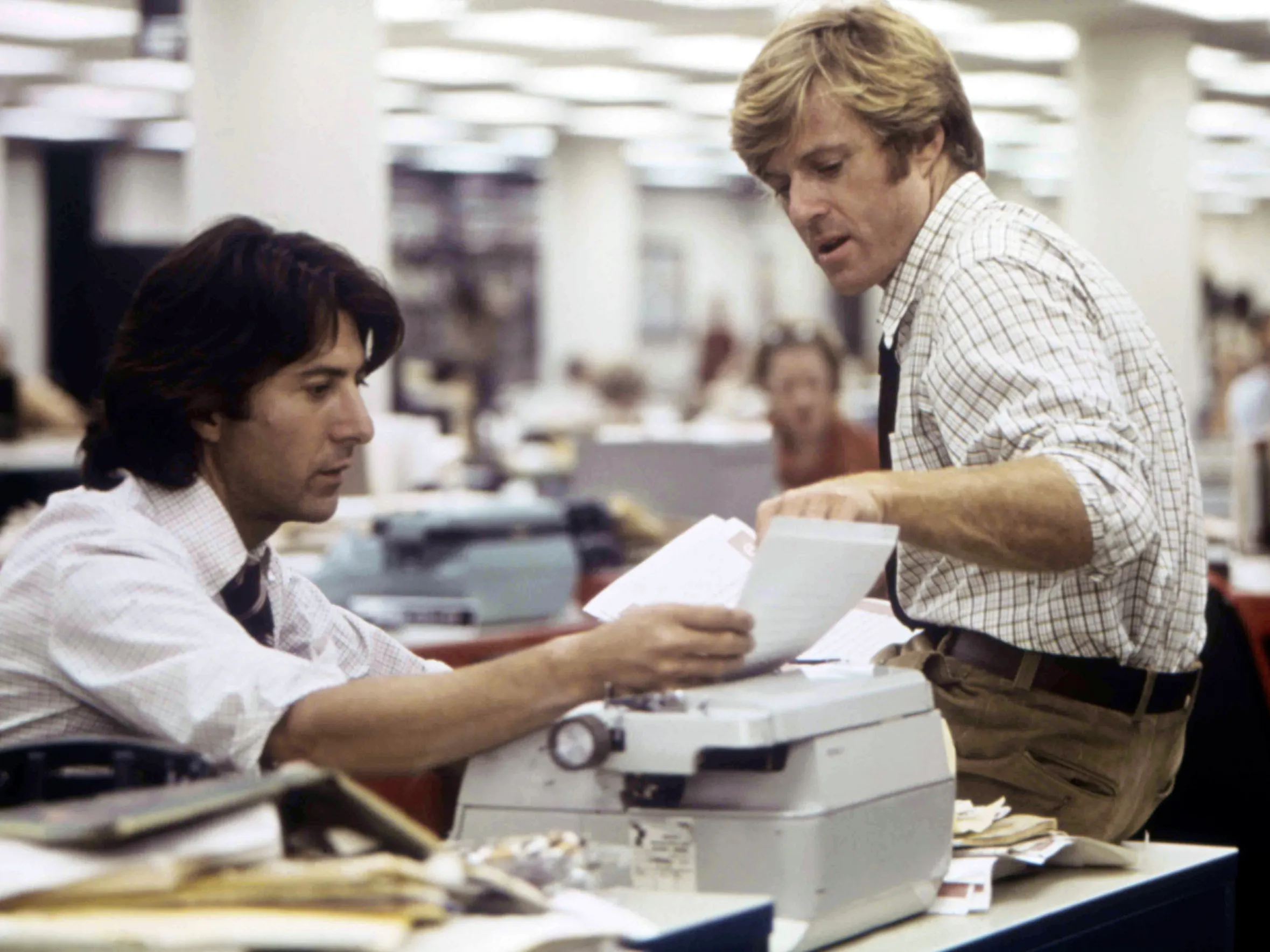“You know the results of the latest Gallup Poll? Half the country never even heard of the word Watergate. Nobody gives a shit. You guys are probably pretty tired, right? Well, you should be. Go on home, get a nice hot bath. Rest up… 15 minutes. Then get your asses back in gear. We’re under a lot of pressure, you know, and you put us there. Nothing’s riding on this except the, uh, first amendment to the Constitution, freedom of the press, and maybe the future of the country. Not that any of that matters, but if you guys fuck up again, I’m going to get mad. Goodnight.”
On June 17th, 1972, five men were arrested for burglarising the Democratic National Committee’s headquarters at the Watergate Hotel in Washington D.C. This seemingly innocuous, if not bizarre event, morphed into something much larger and as impossible pieces fell in place, blame for the break-in pointed firmly at a group operating under the Committee to Re-elect the President or CRP (Creep), and to the highest levels of security in the White House. A little over two years later President Nixon announced his resignation. Alan J. Pakula’s All the President’s Men tells the story of how two journalists from the Washington Post questioned the right people and followed the money to blow the conspiracy wide open and expose the ugly world of surveillance and corruption at the head of the American government.
The reporting on the break-in and subsequent scandal earned The Washington Post a Pulitzer Prize, largely from the contributions made by Bob Woodward and Carl Bernstein. Woodward was hired at the Post in 1971, a year before the burglary; he was a generally inexperienced journalist with only a few years working for small town papers under his belt. When he was assigned to report on the Watergate break-in, no one knew how deep the rabbit hole went. Bernstein had worked for the Post since ’66, and was added to the case (by request) as an experienced hand to help guide Woodward’s reporting. But it turned into far more of a joint effort by the end of ’72.
They recognised public intrigue in the story and toyed around with writing a book recounting events surrounding the Watergate break-in, but were non-committal and focussed on other endeavours. Enter Robert Redford. It was the heartthrob of the sixties and seventies who approached the reporters about buying the film rights to a book. The journalists set to work and with guidance from Redford – particularly regarding how the story was structured – they published the book All the President’s Men in 1974, mere months before Nixon resigned. The final product is a dense, yet fun read, extremely entertaining and illuminating to depths the film simply can’t reach regarding details and strategies employed by the duo.
Naturally, Pakula’s account begins with the break-in; a taught, scoreless scene where bursts of perfectly jarring sound design carry immense intensity. Every click of a doorknob or dulled footsteps on carpeted halls transport the audience into the scene like few other scenes in any movie have. It makes you feel like a perpetrator, and any sound may alert a guard. Additionally, the scene is shot with excellent night time cinematography from Gordon Willis – the genius behind the darkness in The Godfather parts one and two – which calcifies that sense of ‘being there’. These two behind the camera elements prove integral to the most memorable moments of a movie filled with unforgettable dialogue.
Who better then, to write unforgettable dialogue than one of the greatest screenwriters to ever enter the craft. William Goldman was personally selected by Redford to pen the script. It would be the fourth of five films on which the actor brought Goldman’s words to life, the first being the inimitable Butch Cassidy and the Sundance Kid. William Goldman went through a writer’s version of hell to get this screenplay onto the screen. Bernstein continually asked for changes to make the depiction of himself wittier, and a far superior talent to Woodward. Bernstein went as far as to present his own version of a screenplay to Goldman who left the meeting without turning the first page. Pakula continually asked for re-writes and sent letters to Goldman’s office daily with the phrase, ‘Don’t deny me any riches!’ as their only content. In one of his many books, Goldman made the statement that given the chance to do his life over, he would stay as far away from All the President’s Men as he could.
As one could expect with this being a project of passion for Robert Redford, he puts in a great performance as Bob Woodward. He brings a real sense of urgency to his portrayal, like the investigation is trying to catch grains of sand slipping through a sieve. His greatest moments in the movie – and some of the greatest of the movie generally – are Woodward’s car park meetings with the informant Deep Throat. Here Redford is always on edge. He always seems out of breath and fit to drop. As the film progresses, these meetings become more tense and that perfect dark cinematography and jarring sound design reappear to great effect. Deep Throat – whose real name, Mark Felt, would not be revealed for almost thirty years after the release of the film – is the most memorable character of the movie. Hal Holbrook brings to life a person no one knew with striking vividity. It is a performance that will remain with you long after the film is over. Dustin Hoffman turns in a relatively standard Dustin Hoffman performance, but it is perfect for what the movie needs Bernstein to be. Over the two hours you grow a deep affinity for Redford and Hoffman’s Woodward and Bernstein.
Everyone in this movie is doing their best work. The entire supporting cast is fantastic. Jack Warden, Martin Balsam, Ned Beatty, Robert Walden, to name only a few, are all great. However, the standout is Jason Robards as Ben Bradlee, chief editor of The Washington Post. His presence on screen is immense: commanding, gravely serious, with a nurturing nature. He cares about his team, guides them through the backlash from the White House, dissuades them from taking the easy route and truly cares about reporting an important story for the sake of reporting it. It’s one of the best depictions of leadership in any film and it’s no wonder why Robards won the Academy Award for his performance.
Alan J. Pakula and Robert Redford’s All the President’s Men is the kind of movie which really shouldn’t work. It’s heavy on dialogue about people the audience never sees and are mentioned once or twice, it moves at a snail’s pace as pieces of the puzzle are found and slowly fit together, and finishes in the middle, because the details of it all don’t really matter. What matters is the goal and the people involved in reaching the goal. No other movie can make the audience live in the blue cigarette haze of a twentieth century newsroom, and feel nostalgic for a kind of journalism that really only existed in false memories, movies, and a brief few years in the early seventies.




